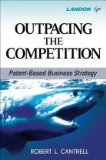The U.S. Patent and Trademark Office has acknowledges that it might have been miscalculating patent term adjustment (PTA) for patents issued from 35 U.S.C. 371 national stage filings.
Fish & Richardson and their pharmaceutical client Japan Tobacco Inc. (JT) discovered a significant error in the manner by which the U.S. Patent and Trademark Office (PTO) calculates the amount of patent term adjustment to which a patent is entitled under 35 U.S.C. 154(b). This error is different than the one found in the Wyeth v. Dudas case (580 F. Supp. 2d 138), which concerned the PTO’s method of calculating overlap between “A Delay” (resulting from the PTO’s failure to issue actions within specified time frames) and “B Delay”(resulting from application pendency that exceeds three years).
Here, the error concerned how the PTO calculates the length of B Delay for patents granted from most 35 U.S.C. 371 national stage filings. The PTO’s practice has been to award B Delay beginning three years after completion of the requirements under 371(c) (e.g., submission of inventor’s oath or declaration).
However, the statute and regulations require that this period begin three years after the national stage has “commenced” under 35 U.S.C. 371(b) or (f). This commencement is often, though not always, prior to completion of the requirements under 371(c). As a result, PTA resulting from B Delay is often longer than that provided by the PTO’s practice. This difference can be many months or even more than a year.
The time at which the three year “B Delay” clock starts for a 371 national stage filing depends upon whether the national stage commences under 35 U.S.C. 371(b) or 35 U.S.C. 371(f).
35 U.S.C. 371(b)
The U.S. national stage commences under 35 U.S.C. 371(b) on the date that is 30 months from the priority date of a PCT application unless the applicant files an express request for early processing and completes the requirements of 371(c) prior to the 30 month date.
If an application is filed at the PTO without one or more of the items required by 371(c) (e.g., an inventor’s oath or declaration), the PTO issues a Notification of Missing Requirements. The PTO practice has been to start the B Delay clock three years after completion of the 371(c) requirements. However, the B Delay clock should have started three years after commencement. Here, months of potential PTA is lost by misapplication of the rule.
35 U.S.C. 371(f)
The B Delay clock can be started three years after a date that is before the 30 month date if the national stage is commenced under 371(f). This requires that that the applicant file an express request for early processing and complete the requirements of 371(c) prior to the 30 month date. If either one of these requirements is not met, then the national stage (and the reference date the B Delay clock) will commence on the date that is 30 months from the priority date of the PCT application.
For biotech and pharma patents in particular, these additional days of patent term can be of significant value since every day represents significant sales. There are currently over 100 “blockbuster” drugs — those drugs with $1 billion annual sales or more. That works out to over $2.7 million in sales per day.
Fish & Richardson challenged the PTO’s practice on behalf of one of JT’s patents and has recently received a favorable Decision from the Office of Petitions. The USPTO intends to eventually change its internal system to apply the correct PTA calculation method going forward.
However, you should confirm the PTA term for all patents derived from 371 national stage filings.
Fish & Richardson now has a page explaining how to correctly measure this B delay.
(via Fish & Richardson)


